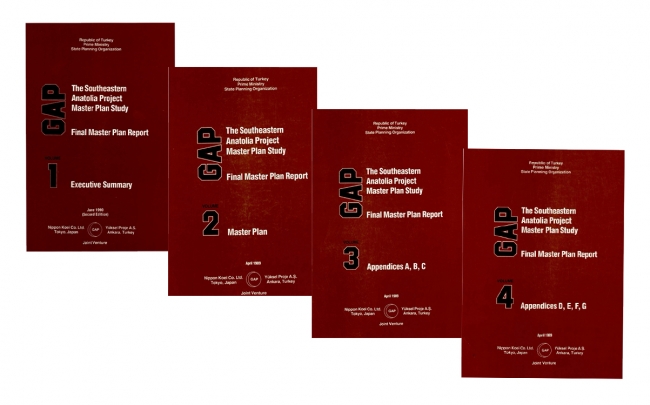GAP MASTER PLAN (1989)

| Master Plan Cilt 1-ing |
| Master Plan Cilt 2-ing |
| Master Plan Cilt 3-ing |
| Master Plan Cilt 4-ing |
The GAP Master Plan providing an overall framework for regional development includes the following: scheduling actions geared to developing land and water resources with due account of financial and technical capacities; projecting induced developments in economic and social sectors, employment creation, associated distribution of population in rural and urban settlements; macro-level assessments in regard to education and health services and need for housing and urban infrastructure; and need of funds over years. As such, the GAP Master Plan is a guide that facilitates the integration and coordination of development efforts waged by various governmental agencies and shows the direction of plans, programmes and projects to be developed at sub-scales.
In the GAP Master Plan, 1985 is accepted as the starting year of the planned period. For that year, it was estimated that per capita gross regional product (GRP) in the GAP Region was 47% of per capita gross domestic product (GDP) in Turkey.
According to the maximum growth scenario in the GAP Master Plan, annual growth rate of GRP is projected as 7.7%.
Master Plan Targets
- Bringing 1.7 million hectares of land under irrigation (irrigation area is shown as 1.8 million hectares in the GAP Regional Development Plan)
- Annual production of 27 billion kWh of hydraulic energy
- 209% increase in per capita income
- 445% increase in GRP
The GAP Master Plan pinpoints four basic strategies for the time perspective extending to 2005 in order to reach targets which complement each other and thus form an integral whole:
- Development and management of water and land resources for both irrigation purposes and for urban-industrial uses,
- Improvement of land use by introducing better farm management systems, farming practises and crop design,
- Encouragement of manufacturing industries by giving special emphasis to local and agriculture related resources and inputs,
- Improvements in social services and urban infrastructures in order to better respond the needs of the people and attract qualified personnel to the region.

















